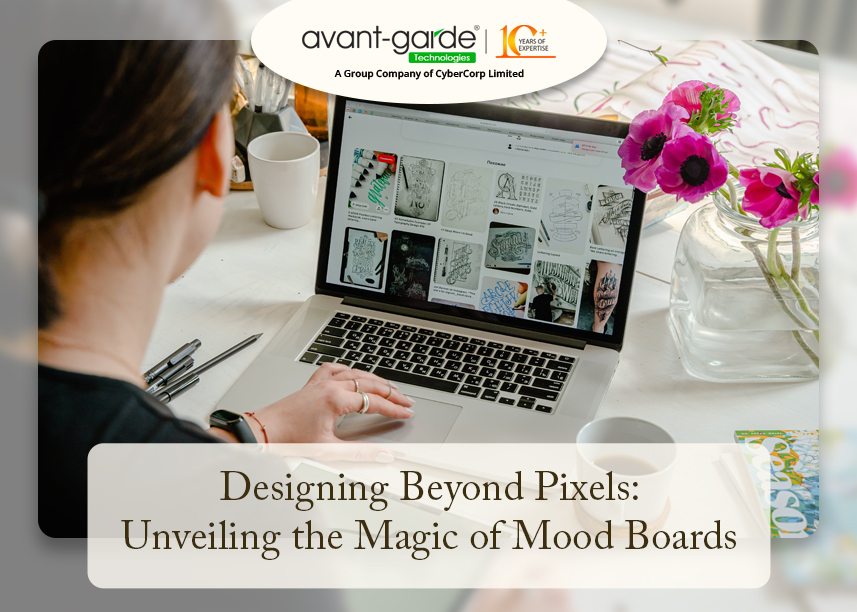
Ignite Creativity, Transform Websites: Mood Boards in Web Designing
- Blog
- Ignite-creativity-transform-websites-mood-boards-in-web-designing

Web design is a blend of artistry and functionality, where every element harmoniously coexists to create an immersive user experience. Enter the Mood Board - a vibrant canvas of inspiration that fuels the creative process for web designers. In this blog, we embark on a journey to unravel the enchanting world of Mood Boards for web designing, uncovering why they are an essential tool in crafting visually captivating and user-friendly websites.
What is the purpose of Mood Board for Web Design?
The Art of Visual Storytelling:
Mood Boards are like the prelude to a symphony, setting the tone and narrative of the web design project. By amalgamating images, colour palettes, typography samples, and other design elements, Mood Boards provide a visual roadmap, guiding designers towards a cohesive and compelling design language.
Igniting Creativity and Innovation:
In the realm of web designing, creativity knows no bounds. Mood Boards act as the creative spark that ignites designers' imaginations. By presenting a curated selection of images, textures, and styles, Mood Boards prompt designers to think outside the box, pushing boundaries and exploring innovative design solutions.
Aligning Vision and Expectations:
For designers, understanding the client's vision is paramount. Mood Boards serve as a bridge between client expectations and design execution. By presenting a visual representation of design elements, clients can provide feedback early in the process, ensuring that the final website aligns seamlessly with their vision.
Establishing Consistency and Cohesion:
A harmonious web design hinges on consistency across all elements. Mood Boards help establish a unified visual language, ensuring that colour schemes, typography, imagery, and overall aesthetics maintain coherence throughout the website. This cohesion contributes to a seamless and delightful user experience.
Enhancing Collaboration and Communication:
Mood Boards are a powerful communication tool, especially in collaborative design projects. They serve as a shared visual reference point for designers, developers, and clients alike. This visual language transcends linguistic barriers, fostering clearer and more effective communication throughout the design process.
Streamlining Decision-Making:
The creative process often involves making countless design choices. Mood Boards streamline this decision-making process by providing a curated selection of design elements. Designers can refer back to the Mood Board to ensure that every choice aligns with the established design direction.
Conclusion: Elevating Web Design with Mood Boards
Mood boards ignite creativity, bridge communication gaps, and guide designers towards creating captivating and cohesive websites. At AGTS, we understand the pivotal role that Mood Boards play in the web design process, ensuring that every project is infused with creativity, innovation, and client-centric design solutions. Let the magic of Mood Boards transform your web design journey!